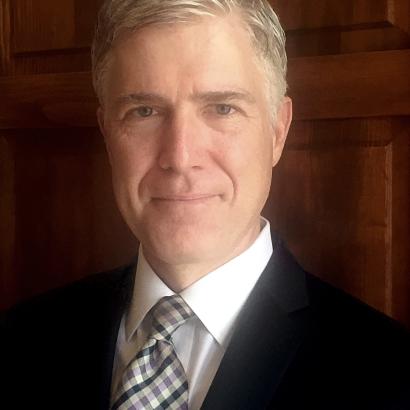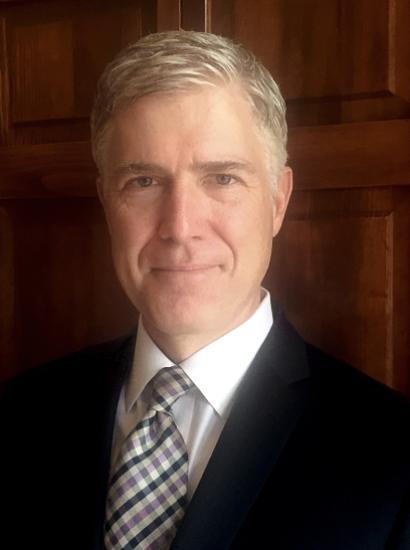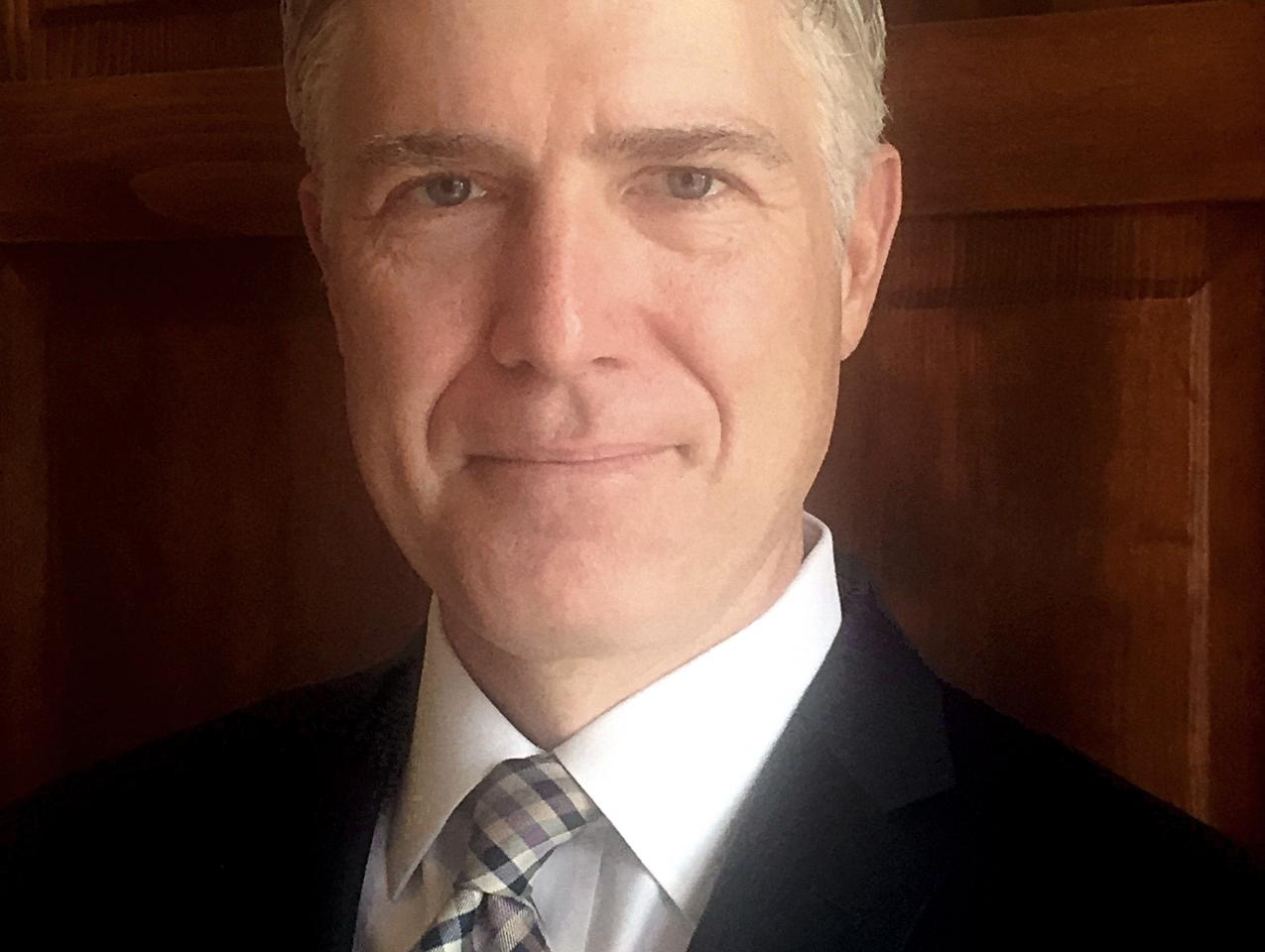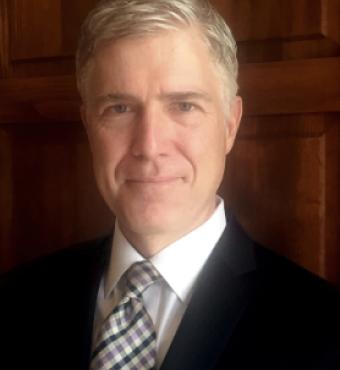The United States Supreme Court has sent shockwaves through much of the nation with its decision in Bostock v. Clayton County. By a six-to-three vote, the Court held in no uncertain terms that the prohibition against sex discrimination in Title VII of the Civil Rights Act of 1964 makes it illegal to fire a person “simply” due to their sexual orientation or gender identity.
The basic statutory text of Title VII provides that it is “unlawful . . . for an employer to fail or refuse to hire or to discharge any individual, or otherwise to discriminate against any individual with respect to his compensation, terms, conditions, or privileges of employment, because of such individual’s race, color, religion, sex, or national origin.”
Writing for the majority, Justice Neil Gorsuch argued that his textualist approach compelled the novel conclusion that the term “sex” includes not only biological sex, but also sexual orientation and gender identity. “In the context of an unambiguous statutory text,” he wrote, “whether or not a specific application was anticipated by Congress is irrelevant.” His argument is misguided. It holds that the meaning of the term “sex” necessarily bears no relation whatsoever to the intentions of the Congress that passed the legislation or the public who endorsed it.
The dissent of Justice Samuel Alito rightly branded Gorsuch’s opinion as pure “legislation.” Congress, he pointed out, has repeatedly refused to pass legislation to ban discrimination on the basis of sexual orientation or gender identity. It is wholly implausible, then, that a sound textualist reading of the highly contentious term “sex” in the Civil Rights Act could conclude that both categories were covered by the statutory language, especially as these modern categories were well beyond Congress’ intent in 1964. Under a textualist approach, it is the original public meaning of a disputed term that carries the weight of the day—and volumes of evidence demonstrate that biological sex alone was the target of Title VII.
Gorsuch’s explicit use of textualism represents a quiet revolution in statutory construction. The 2017 decision in G. G. v. Gloucester County School Board involved an effort by the Office of Civil Rights in the Department of Education to require all high schools to treat gender identity as a covered from of discrimination under Title IX of the Civil Rights Act, which forbids educational programs receiving federal financial assistance from subjecting any person to discrimination on the basis of sex.
The Fourth Circuit upheld that decision by taking the then-fashionable view that the Supreme Court’s 1997 case of Auer v. Robbins required courts to give extreme deference to a federal agency’s interpretation of its own regulation. Ultimately, that court found that there were manifold ambiguities in the term “sex,” and accordingly supported the OCR’s determination that a school “generally must treat transgender students consistent with their gender identity.” The court mentioned intersex persons, those born with X-X-Y chromosomes, and those who lost external genitalia through accident to defend its conclusion. Thus, the Fourth Circuit used low probability events to recast the traditional binary definition of sex.
As most recently demonstrated in Kisor v. Wilkie (2019), Justice Gorsuch has long been a fierce opponent of Auer deference on the simple and powerful ground that courts should not allow an administrative agency the power to rewrite laws when the agency’s “interpretation doesn’t represent the best and fairest reading.” How ironic it is that Gorsuch’s textualist approach perpetuates, through different means, the same error in Bostock by treating his improbable rendition of the 1964 Act as its best and fairest reading.
The first error in the Gorsuch approach lies in his failure to identify a case that everyone agrees involves illegal discrimination on the basis of either sexual orientation or gender identity and violates Title VII. That situation would arise if either men or women, but not both, were excluded from employment because of either sexual orientation or gender identity—whether or not either of these categories was known in 1964.
This view should be uncontroversial because it applies traditional notions banning rules that apply to one sex but not the other to these modern cases. Justice Gorsuch seeks to do just this by looking at cases that he thinks bolster his view. But none of them achieve that goal.
Justice Gorsuch first points to Phillips v. Martin Marietta Corp. (1971), a short per curiam opinion in which the Supreme Court held that an employer violated Title VII when it refused to accept job applications “from women with pre-school-age children.” The obvious source of discrimination was that the employer would accept such applications from men with pre-school-age children. Title VII created a statutory exception to its basic rule prohibiting discrimination on the basis of sex, which allowed for sex-based discrimination (but not race-based discrimination) where the former was regarded as a “bona fide occupational qualification” (BFOQ).
In 1971, the Court remanded to the lower court to see whether or not having a special rule for women with pre-school-age children fell into that exception. This shows that Phillips was regarded as a garden variety case of sex-discrimination. Admittedly, the BFOQ claim was uncertain in 1971, but within years, as Justice Alito noted, the BFOQ was read “very narrowly” in Dothard v. Rawlinson (1977).
The same analysis also applies to Justice Gorsuch’s reliance on Oncale v. Sundowner Offshore Services (1998), which also involved a conventional case where prohibitions were placed on one sex but not the other. There the Court unanimously held that sexual harassment claims under Title VII included cases of same-sex harassment. Oncale involved a man who was sexually harassed by another man. The case clearly falls under Title VII if the assailant never chose to harass women. But if he were a person who harassed both men and women to the same degree, then there is no discrimination because of sex. But even if Title VII does not apply, the state law of assault or intentional infliction of emotional distress would cover both cases, because both turn on some illicit threat or use of force, in which any element of discrimination is wholly irrelevant.
Justice Gorsuch offers a highly novel proposition in connecting his mistaken readings of Phillips and Oncale to Bostock. “An employer who fires an individual for being homosexual or transgender,” he writes, “fires that person for traits or actions it would not have questioned in members of a different sex.” On his view, if it is fine for men to choose women as partners, then it should be fine for women to choose other women as partners as well.
In response, the employer in Bostock argued that there was no sex discrimination here because it imposed the same restrictions on men as it did on women—it would not hire either homosexuals or transgender people of either sex. That should in fact be a conclusive answer to Justice Gorsuch’s exotic claim that Bostock follows in the footsteps of Phillips and Oncale: A sex discrimination case could be made out if those prohibitions based on gender identity or sexual orientation applied either to men or women, but not both.
Justice Gorsuch offers the example where a man is fired for being insufficiently masculine and a women is fired for being insufficiently feminine: “in both cases,” he writes, “the employer fires an individual in part because of sex. Instead of avoiding Title VII exposure, this employer doubles it.” That would be true if men could be fired for being insufficiently masculine or women for being insufficiently feminine. But once the same rule is applied to people of both sexes, the element of discrimination drops out of the case.
Justice Gorsuch’s answer to this question is wholly obscure. He starts with this premise: “In Title VII, Congress adopted broad language making it illegal for an employer to rely on an employee’s sex when deciding to fire that employee.” At this point, what drives the analysis is not the initial X-Y, X-X chromosomal difference, it is that the employer who “fires an individual for being homosexual or transgender fires that person for traits or actions it would not have questioned in members of a different sex” (my emphasis)—an odd circumlocution given that there are only two sexes. But these fancy moves do not explain why the term “sex” should not be given its ordinary understanding that is closely tethered to proof of discrimination in the treatment of the two sexes, rather than differences of two people of the same sex.
To make his case, Gorsuch wanders off into an extended disquisition of “but for causation” from tort law to say that if two or more actions combined to cause a particular injury, then each actor may be held fully responsible for the injury. But he gets the tort law wrong. The very notion of “but for” causation, as I argued long ago, is hopelessly overbroad. The “but for” cause must, under the conventional legal approach, also be a substantial factor in bringing about the loss.
Gorsuch gives an example of one car running a red light and the other failing to signal, which results in an accident that would not have occurred if either had obeyed the law. But that hypothetical is a case of joint causation because both drivers are in violation of the rules of the road. No one would say that the plaintiff who complied with the rules of the road was responsible for the loss because “but for” his presence on the road the accident never would have happened.
At this point, it becomes otiose to say that the sex of every person who is the victim of some employment action makes that element a “but for” cause of the overall harm, so that on purely textual grounds the dismissal was “because of” or “on account of” sex. Sex is just a background condition of no causal significance once the element of discrimination between the sexes drops out of the equation.
Nor can this so-called textual result be justified on the supposed ground that “a rule that appears evenhanded at the group level can prove discriminatory at the level of individuals,” as Gorsuch claims. For this proposition, Gorsuch invoked Los Angeles Dept. of Water and Power v. Manhart (1978), in which Justice John Paul Stevens held that there was sex discrimination in the-then common practice of requiring larger pension fund contributions from women than from men for the same set of annual benefits—a practice which was based on the actuarially correct grounds that women, as a whole, live longer than men.
Manhart made the common fallacy that since some women had shorter lifespans than some men, this differentiation based on aggregates was impermissible. On that view, the only way to avoid liability was to give what amounted to an inefficient cross subsidy to women. Curiously, Justice Stevens noted that Title VII would not be violated if the employer instead gave employees of both sexes the same amount of cash which they could then use to purchase insurance within the open market. Of course, at that point the standard insurance risk of adverse selection would mean that both men and women would have to pay more for any given coverage than they would under the efficient practices in use everywhere before they were invalidated under Manhart.
Clearly, there is no “evenhandedness between groups” by forcing cross-subsidies in insurance coverage. It is also clear that Manhart has absolutely nothing to do with Bostock’s strained definition of sex. The one case is about sex discrimination in financial markets under conditions of uncertainty, and the other is about the correct meaning of the term “sex.”
In all, the lesson to learn from this episode is that even the deepest commitment to textualism cannot insulate the most eminent judges who work within that tradition from major blunders.
















